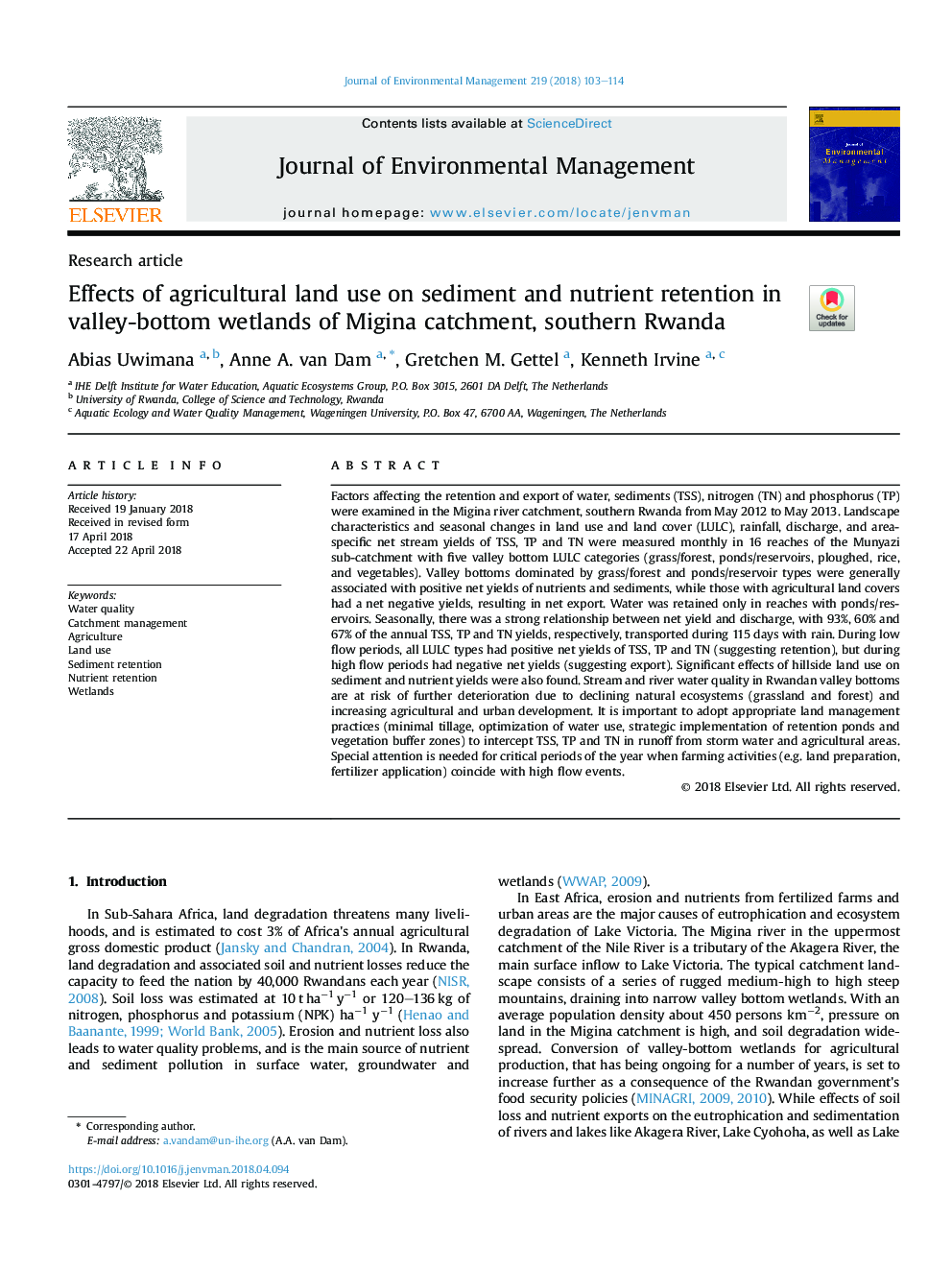| کد مقاله | کد نشریه | سال انتشار | مقاله انگلیسی | نسخه تمام متن |
|---|---|---|---|---|
| 7476649 | 1485199 | 2018 | 12 صفحه PDF | دانلود رایگان |
عنوان انگلیسی مقاله ISI
Effects of agricultural land use on sediment and nutrient retention in valley-bottom wetlands of Migina catchment, southern Rwanda
ترجمه فارسی عنوان
تأثیر استفاده از زمین های کشاورزی در رسوب و ذخیره مواد مغذی در تالاب های دره ی دره ی مینا، جنوب رواندا
دانلود مقاله + سفارش ترجمه
دانلود مقاله ISI انگلیسی
رایگان برای ایرانیان
کلمات کلیدی
کیفیت آب، مدیریت زباله، کشاورزی، استفاده از زمین، احتباس رسوب، احتباس تغذیه ای، تالابها،
موضوعات مرتبط
مهندسی و علوم پایه
مهندسی انرژی
انرژی های تجدید پذیر، توسعه پایدار و محیط زیست
چکیده انگلیسی
Factors affecting the retention and export of water, sediments (TSS), nitrogen (TN) and phosphorus (TP) were examined in the Migina river catchment, southern Rwanda from May 2012 to May 2013. Landscape characteristics and seasonal changes in land use and land cover (LULC), rainfall, discharge, and area-specific net stream yields of TSS, TP and TN were measured monthly in 16 reaches of the Munyazi sub-catchment with five valley bottom LULC categories (grass/forest, ponds/reservoirs, ploughed, rice, and vegetables). Valley bottoms dominated by grass/forest and ponds/reservoir types were generally associated with positive net yields of nutrients and sediments, while those with agricultural land covers had a net negative yields, resulting in net export. Water was retained only in reaches with ponds/reservoirs. Seasonally, there was a strong relationship between net yield and discharge, with 93%, 60% and 67% of the annual TSS, TP and TN yields, respectively, transported during 115 days with rain. During low flow periods, all LULC types had positive net yields of TSS, TP and TN (suggesting retention), but during high flow periods had negative net yields (suggesting export). Significant effects of hillside land use on sediment and nutrient yields were also found. Stream and river water quality in Rwandan valley bottoms are at risk of further deterioration due to declining natural ecosystems (grassland and forest) and increasing agricultural and urban development. It is important to adopt appropriate land management practices (minimal tillage, optimization of water use, strategic implementation of retention ponds and vegetation buffer zones) to intercept TSS, TP and TN in runoff from storm water and agricultural areas. Special attention is needed for critical periods of the year when farming activities (e.g. land preparation, fertilizer application) coincide with high flow events.
ناشر
Database: Elsevier - ScienceDirect (ساینس دایرکت)
Journal: Journal of Environmental Management - Volume 219, 1 August 2018, Pages 103-114
Journal: Journal of Environmental Management - Volume 219, 1 August 2018, Pages 103-114
نویسندگان
Abias Uwimana, Anne A. van Dam, Gretchen M. Gettel, Kenneth Irvine,
